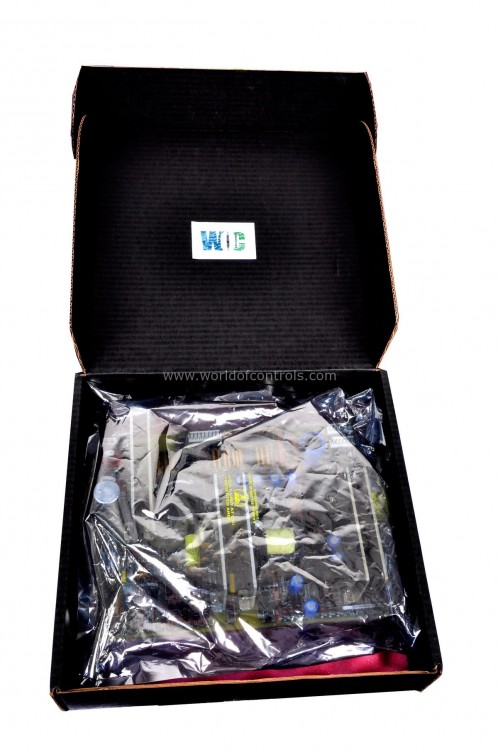SPECIFICATIONS
Part No.: IS200SAIIH2A
Manufacturer: General Electric
Country of Manufacture: United States of America (USA)
Size 33 cm high x 3.2 cm wide (13 in x 1.25 in)
Technology Through hole
Temperature Operating: -30 to 65oC (-22 to 149 oF)
Product Type: Simplex Analog Input Terminal Board
Availability: In Stock
Series: Mark VIe
Functional Description
IS200SAIIH2A is a Simplex Analog Input Terminal Board developed by GE. It is a part of Mark VIe control system. The Simplex Analog Input terminal board is an essential component within the control system, offering versatile analog input capabilities. The terminal board features a compact design, optimizing space utilization within the control system setup. Despite its small footprint, it provides comprehensive analog input functionality.
Features
- Analog Input Capacity: The terminal board is equipped to accept 10 analog inputs, catering to a wide range of monitoring and control requirements. These inputs accommodate various types of transmitters, including 2-wire, 3-wire, 4-wire, or externally powered transmitters.
- Analog Outputs: In addition to the analog inputs, the board offers two analog outputs, enhancing its versatility in signal processing and control applications. These outputs can be utilized for various purposes, such as feedback control or monitoring.
- Connection to PAIC: The board connects to the Process Automation and Instrumentation Controller (PAIC), serving as an interface between the analog input signals and the controller. This seamless integration facilitates efficient data exchange and communication between the terminal board and the controller.
- I/O Pack Communication: Communicates with the controller via Ethernet connectivity, utilizing an I/O pack that plugs into the D-type connector. This Ethernet-based communication protocol enables high-speed data transmission and reliable connectivity between the terminal board and the controller.
- Compatibility with Transmitters: Designed to accommodate various types of transmitters, including 2-wire, 3-wire, 4-wire, or externally powered transmitters. This flexibility allows users to integrate different types of sensors and instruments into the control system seamlessly.
- Versatile Applications: With its robust analog input capabilities and flexible connectivity options, the terminal board finds applications in a wide range of industries and processes. It can be deployed in manufacturing plants, industrial facilities, and process control systems to monitor and control critical parameters.
Installation
- Mounting Options: The terminal board, along with a plastic insulator, is mounted on a sheet metal carrier. This carrier can then be installed on a DIN-rail, providing a convenient and standardized mounting solution. Alternatively, the terminal board, along with the insulator, can be mounted on a sheet metal assembly and directly bolted to a cabinet. This option offers flexibility in installation, allowing for customization based on the specific requirements of the application or system setup.
- Terminal Block Types: There are two types of Euro-block terminal blocks available for the terminal board
- SAIIH1: This variant features a permanently mounted terminal block with 48 terminals. It provides a fixed connection interface, simplifying installation and ensuring a secure electrical connection.
- SAIIH2: This variant incorporates a right-angle header that accepts a range of commercially available pluggable terminal blocks. It also offers a total of 48 terminals, providing flexibility in terminal block selection and compatibility with various connector types.
- Mounting Procedure: To mount the terminal board on a DIN-rail, ensure that the plastic insulator is properly attached to the sheet metal carrier. Then, secure the carrier onto the DIN-rail using appropriate mounting hardware. If mounting directly to a cabinet, assemble the terminal board with the insulator onto the sheet metal assembly. Subsequently, align the assembly with the mounting location on the cabinet and bolt it securely into place.
- Terminal Block Connection: Once the board is mounted, connect the appropriate terminal blocks based on the selected variant (SAIIH1 or SAIIH2). Ensure that the terminal blocks are securely fastened to provide reliable electrical connections.
- Verification: After installation, verify that all connections are secure and properly seated. Perform a visual inspection to confirm that the terminal board is mounted securely and aligned correctly with other components in the system.
The WOC team is always available to help you with your Mark VIe requirements. For more information, please contact WOC.
Frequently Asked Questions
What is IS200SAIIH2A?
It is a Simplex Analog Input Terminal Board developed by GE under the Mark VIe series.
Can the terminal board be used in Triple Modular Redundancy (TMR) applications?
No, the board is designed with only one Process Automation and Instrumentation Controller (PAIC) connection, making it unsuitable for TMR applications. TMR applications typically require redundant connections for enhanced reliability, which the terminal board does not support.
What types of transmitters or transducers are compatible with the terminal board?
The board is compatible with various types of transmitters or transducers, including 2-wire, 3-wire, 4-wire, or externally powered transmitters. This compatibility ensures versatility in sensor integration for diverse monitoring and control applications.
How can users configure the analog output circuit for different output ranges?
Users can configure the analog output circuit for different output ranges by adjusting the jumper settings on the terminal board. This flexibility allows for customization based on specific signal output requirements.
